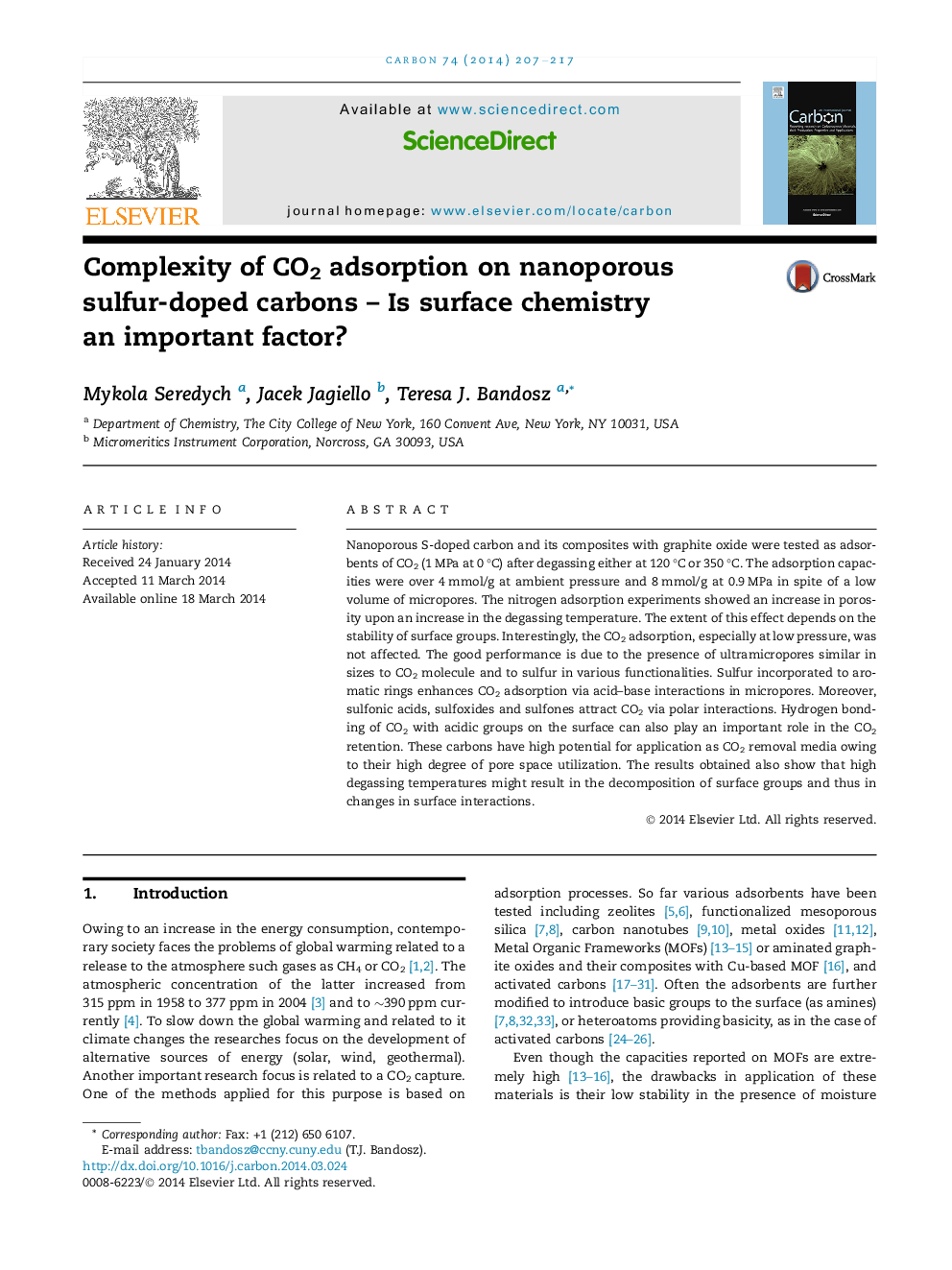| Article ID | Journal | Published Year | Pages | File Type |
|---|---|---|---|---|
| 7853608 | Carbon | 2014 | 11 Pages |
Abstract
Nanoporous S-doped carbon and its composites with graphite oxide were tested as adsorbents of CO2 (1 MPa at 0 °C) after degassing either at 120 °C or 350 °C. The adsorption capacities were over 4 mmol/g at ambient pressure and 8 mmol/g at 0.9 MPa in spite of a low volume of micropores. The nitrogen adsorption experiments showed an increase in porosity upon an increase in the degassing temperature. The extent of this effect depends on the stability of surface groups. Interestingly, the CO2 adsorption, especially at low pressure, was not affected. The good performance is due to the presence of ultramicropores similar in sizes to CO2 molecule and to sulfur in various functionalities. Sulfur incorporated to aromatic rings enhances CO2 adsorption via acid-base interactions in micropores. Moreover, sulfonic acids, sulfoxides and sulfones attract CO2 via polar interactions. Hydrogen bonding of CO2 with acidic groups on the surface can also play an important role in the CO2 retention. These carbons have high potential for application as CO2 removal media owing to their high degree of pore space utilization. The results obtained also show that high degassing temperatures might result in the decomposition of surface groups and thus in changes in surface interactions.
Related Topics
Physical Sciences and Engineering
Energy
Energy (General)
Authors
Mykola Seredych, Jacek Jagiello, Teresa J. Bandosz,
